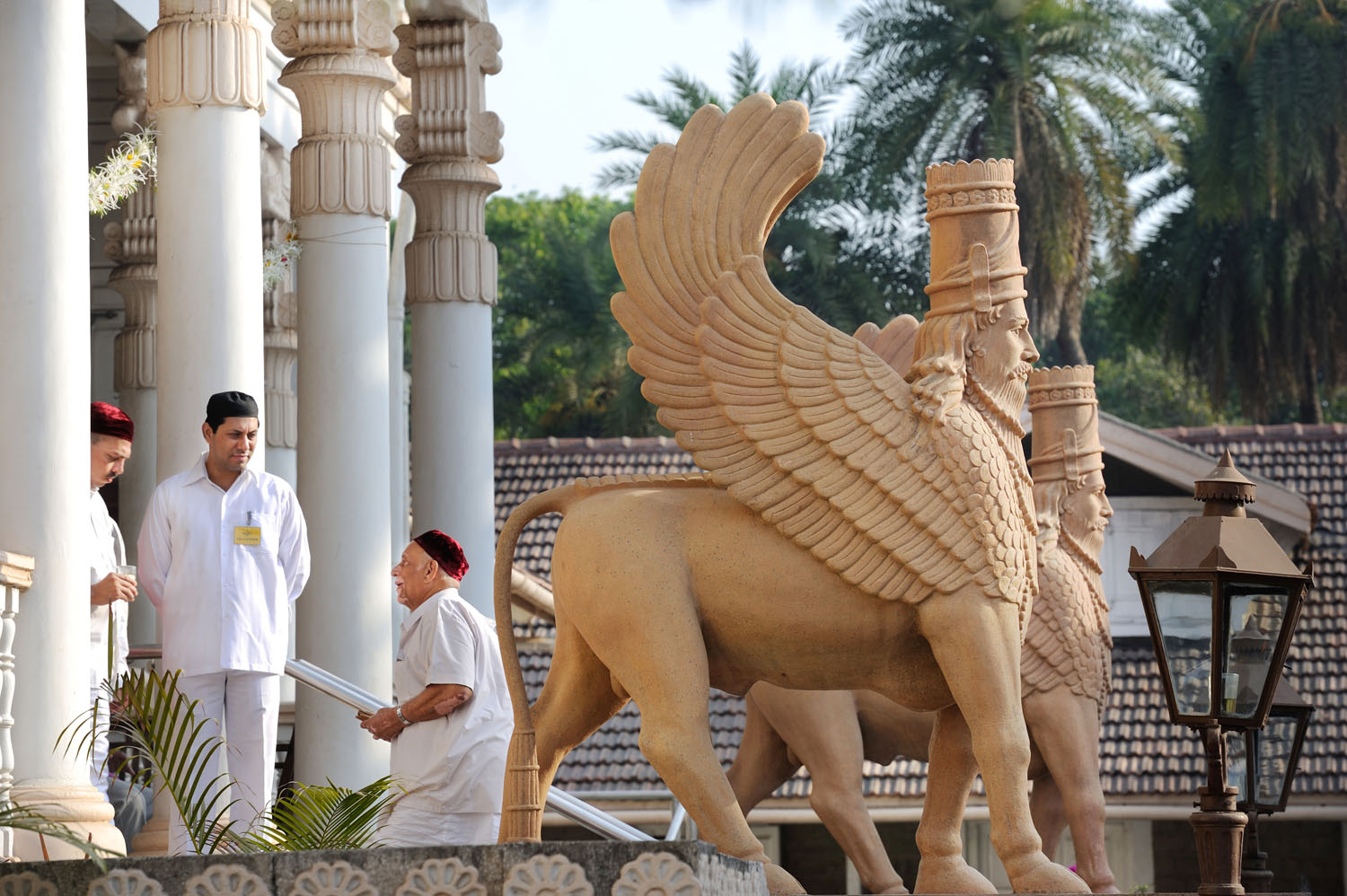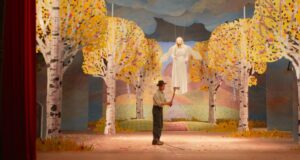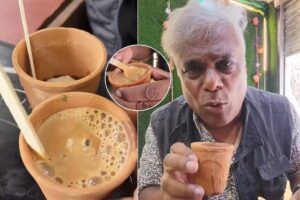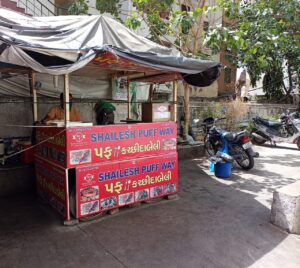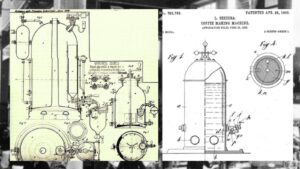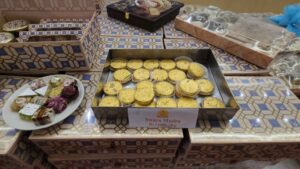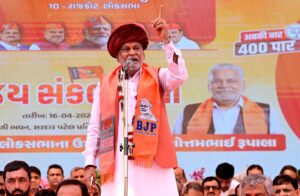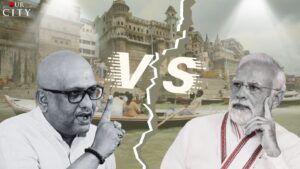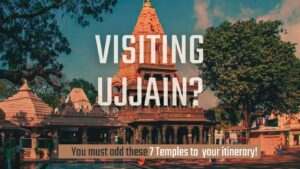It is the Dhansak and wedding feasts that come to mind when you think of Parsis. Shireens with swan necks dressed in chiffon and Chopin. Sciatic Solis in sola- topis and solitude. When you think of these renowned personalities, sculptures, soaring institutions, the Bombay they created will come to your mind. You also imagine a dying community and vultures going extinct. But you hardly consider this as a religion. Perhaps because religion is today perceived as aggressive and intolerable, but the Parsis are nowhere near to that.
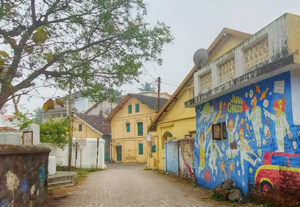 Faith is what drives the community. Indeed it is its raison d’etre. For this minority community was born out of the desperate attempt to keep Zoroastrianism alive. ‘Parsi’ refers to an ethnic group rather than a religion. It refers to the offspring of the initial group of Persian refugees who escaped their homeland’s Arab conquest and settled on Gujarat’s coastlines in the eighth century CE.
Faith is what drives the community. Indeed it is its raison d’etre. For this minority community was born out of the desperate attempt to keep Zoroastrianism alive. ‘Parsi’ refers to an ethnic group rather than a religion. It refers to the offspring of the initial group of Persian refugees who escaped their homeland’s Arab conquest and settled on Gujarat’s coastlines in the eighth century CE.
The heart of the Parsi religion does not reside in some massive Mumbai Zoroastrian fire temple. Their holiest location is in Udvada, a Gujarati seashore town.
The Sacred Fire
The ‘throne’ of the Iranshah fire is Udvada. This temple is only 261 years old, yet history and belief guarantee us that the fire in its inner sanctum has been blazing constantly for about 1,290 years.
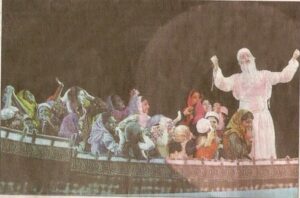 A mythical priest recalls his god Ahura Mazda to aid the oppressed but now blessed people and accomplish the promise before a votive urn on Sanjan’s distant coast. Around 720 CE, Dastur Nairyosang served as the spiritual leader who led the group of storm-tossed refugees who had arrived in Gujarat. Following the overthrow of Persia’s second and final Zoroastrian dynasty, they had lost their influence in politics, society, and the economy, and they were subject to religious intolerance as Islam gained strength.
A mythical priest recalls his god Ahura Mazda to aid the oppressed but now blessed people and accomplish the promise before a votive urn on Sanjan’s distant coast. Around 720 CE, Dastur Nairyosang served as the spiritual leader who led the group of storm-tossed refugees who had arrived in Gujarat. Following the overthrow of Persia’s second and final Zoroastrian dynasty, they had lost their influence in politics, society, and the economy, and they were subject to religious intolerance as Islam gained strength.
Emergence Story
Parsis post surviving from the storm had vowed to build a fire temple of the highest calibre. The holy fire they would refer to as Iranshah would serve as the “palace” for their exiled Sassanian emperor. They managed to live, washing up on a beachhead between Diu and Sanjan, unsettled and dubious, and later coming under the rule of Vinayaditya, the Chalukya King of Badami.
They remembered their promise. They quickly assembled the other 15 types of fire required to produce the Atash Behram’s supreme fire, but they were missing the 16th type of fire—the cosmic flame. After Dastur Nairyosang prayed nonstop for eight days, Ahura Mazda released his divine bolt on the ninth day.
Their Journey
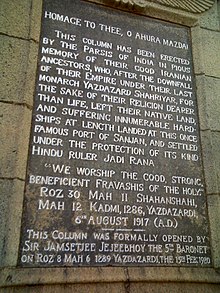 The Parsis, however, were simply a small group of outsiders residing in the territory. They kept shifting their bonding fire to safer areas out of concern for maintaining the faith. It was kept secret for many years in the caves of the Barhot Hills. Then it was moved to Vansda, and was known as the Kisseh-i-Sanjan (864-line Persian poetry allegedly written in 1599 by a priest named Bahman Kaikobad Sanjana who was based in Navsari).
The Parsis, however, were simply a small group of outsiders residing in the territory. They kept shifting their bonding fire to safer areas out of concern for maintaining the faith. It was kept secret for many years in the caves of the Barhot Hills. Then it was moved to Vansda, and was known as the Kisseh-i-Sanjan (864-line Persian poetry allegedly written in 1599 by a priest named Bahman Kaikobad Sanjana who was based in Navsari).
It is greatly revered and residing strong since past 250 years, benefitting the locals and the town. Powerful and well-educated priests, business, trade, and gentleman farmers who tended huge fields; filled their funds with forest products, particularly timber and toddy and prospered in Navsari. Indeed, until the East India Company attracted them to Surat and later to Bombay, the Parsis were primarily a rural society.
However, later in Navsari, the priests’ bitter rivalry over the lucrative maintenance of the Iranshah caused one group to steal the sacred fire in 1740. It was kept hidden in Surat for three years as the conflict heated up. It was brought back to Navsari, but the discord persisted. The great Iranshah had to find refuge once more, this time in Bulsar. The Imperial Gazetteer states that on October 28, 1742, it was re-crowned in Udvada amid considerable fanfare.
Why is it worth your time?
The once-vibrant Parsi mohallas of Iranshah’s former house no longer present in Udvada since it was never granted the same secular status as Navsari. The most revered fire temple or the Atash Behram of the Parsis is hidden among a squat of traditional homes. Any fire temple’s mobeds are striking figures in their flowing white muslin jamas, paghris, and embroidered padans of fine mul that cover their mouth and nose to protect the holy flame. More recognisable is the Dastur (chief priest) in charge of the Atash Behram. But nobody emanates awe and history like the Udvada guardians of the holiest of holy do. Please note that the Agiyari is not open for the non- Parsis. There is also a Museum and library which is worth your visit. The Udvada Beach is rocky yet it’s a blessing to be there during the sunset.
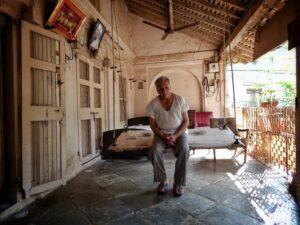 The town’s historic architecture will astound you. A white-bearded patriarch is seated with his pale, pajama-clad legs spread out on the retractable arms of an aaram khursi in one of the houses with the typical wooden kathera or railings around the social space of an otla, patterned with auspicious designs in powdered chalk. Women sit wearing a half gown inside the front room’s sepia photograph-lined walls, which also features loose-covered armchairs and a bed with a thick Sholapur bedspread.
The town’s historic architecture will astound you. A white-bearded patriarch is seated with his pale, pajama-clad legs spread out on the retractable arms of an aaram khursi in one of the houses with the typical wooden kathera or railings around the social space of an otla, patterned with auspicious designs in powdered chalk. Women sit wearing a half gown inside the front room’s sepia photograph-lined walls, which also features loose-covered armchairs and a bed with a thick Sholapur bedspread.
Flavours from the street
 Pop-up style cafés along the sloping road opposite the temple sell a variety of homemade cookies and fish pickles to customers. To sample specialities like the marinated boi fry (white mullet fish), akuri (scrambled eggs), salli boti (chicken or mutton gravy topped with potato sticks), dhansak (lentils with meat), and patio (fish or prawn curry), one must visit the Globe Hotel, Ashishvangh, and Café Farohar. A bottle of cool Sunta raspberry soda will also be served with each meal. The Irani bakery there serves the best mawa cakes, nankathai biscuits, and buttery, flaky kharis (puff pastry cookies).
Pop-up style cafés along the sloping road opposite the temple sell a variety of homemade cookies and fish pickles to customers. To sample specialities like the marinated boi fry (white mullet fish), akuri (scrambled eggs), salli boti (chicken or mutton gravy topped with potato sticks), dhansak (lentils with meat), and patio (fish or prawn curry), one must visit the Globe Hotel, Ashishvangh, and Café Farohar. A bottle of cool Sunta raspberry soda will also be served with each meal. The Irani bakery there serves the best mawa cakes, nankathai biscuits, and buttery, flaky kharis (puff pastry cookies).

